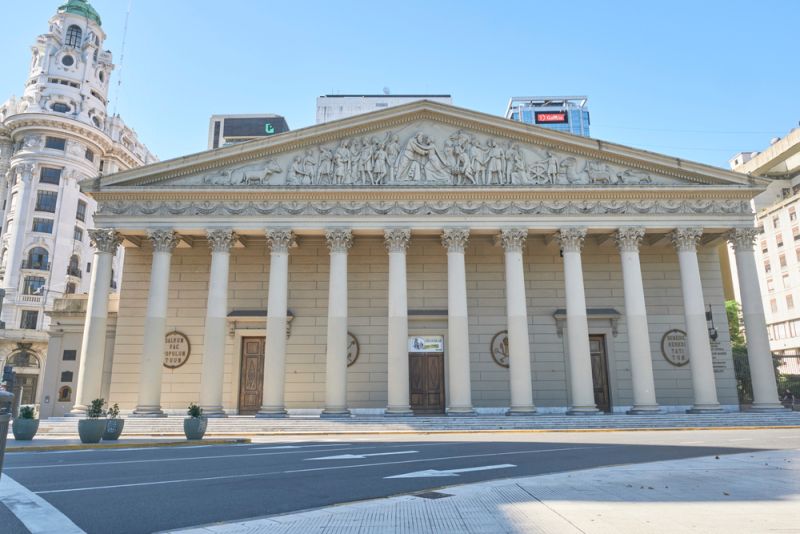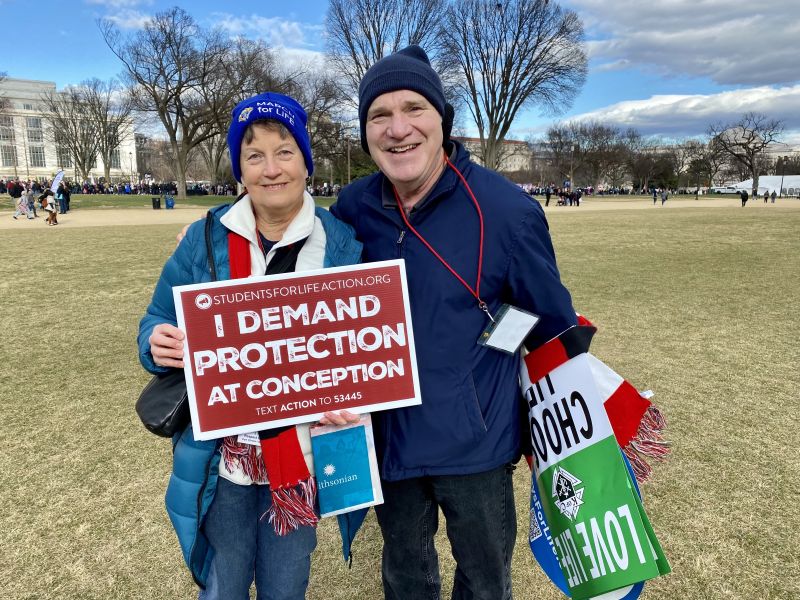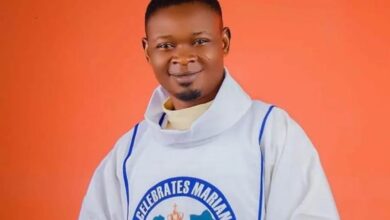Argentina’s primatial see moves from Buenos Aires: What does the change entail?

 Buenos Aires Metropolitan Cathedral. / Credit: Carolina Jaramillo/Shutterstock
Buenos Aires Metropolitan Cathedral. / Credit: Carolina Jaramillo/Shutterstock ACI Prensa Staff, Jul 24, 2024 / 12:30 pm (CNA).
Following Pope Francis’ decision to move the primatial see of Argentina — until now in Buenos Aires — to Santiago del Estero, elevating it at the same time to archiepiscopal see, some important questions arise, such as what this title means and what implications it has, as well as what changes it makes within the Church.
What is a primatial see?
Father Alejandro Russo, rector of the Buenos Aires cathedral, explained in an interview with the “Poliedro” program on channel Orbe 21 that “the Latin Church has the custom, rooted in time, of declaring primatial that diocese, that particular Church that was the first in what later became the national territories.”
“For example, Lyon is that of France, Toledo is that of Spain; it’s neither Paris nor Madrid, because [in those cases] it is the oldest episcopal see in the territory, which does not mean the nation’s final borders, because that sometimes happens later,” he explained.
Canon 438 of the Code of Canon Law states: “The titles of patriarch and primate entail no power of governance in the Latin Church apart from a prerogative of honor unless in some matters the contrary is clear from apostolic privilege or approved custom.”
Furthermore, in this particular case, although it is now elevated to an archiepiscopal see, Santiago del Estero will continue to be part of the ecclesiastical province of the Archdiocese of Tucumán. Consequently, the archbishop will not wear a pallium, “because the pallium is worn by archbishops who are metropolitans, who preside over ecclesiastical provinces,” Russo noted.
In Argentina, primacy does not have its own statute either, the priest explained. “In other parts of the world, for example in Hungary, or in Poland, or elsewhere, the primate has, for example, the right to have a superior ecclesiastical court of third instance,” which in Argentina never existed.
It’s an honorable mention “for being a bishop of the oldest place,” he added.
Historical overview
In Argentina, “the first episcopal see, erected in what would later become the territory of the Argentine Republic, was a diocese based in the current district of Santiago del Estero, which was called the Diocese of Tucumán, because that was the region that also received that name,” Russo continued.
“Immediately, the pope then, St. Pius V, at that time created a diocese and placed a bishop — the Holy Father rightly says in the papal bull — where the cathedral of Sts. Peter and Paul was erected, which no longer exists, but it was the first time that in this territory, which later would become the Argentine Republic, the proclamation of the Gospel was heard from a successor of the apostles, a bishop,” the priest said.
“In that place where the Diocese of Santiago del Estero is today was the first cathedral, in what would later become Argentine territory,” he summarized.
“Therefore, because it is then the oldest place, to the heir of that oldest diocese, the current diocese of Santiago del Estero, which was erected in 1907, the title of primacy belongs.”
In January 1936, almost a month after having created Archbishop Santiago Luis Copello a cardinal, Pope Pius XI decreed that Buenos Aires would be the primatial see, explained the rector of the Buenos Aires cathedral.
However, “the custom of the Church is not to declare the first archdiocese the primatial see but rather to declare the first diocese the primatial see,” he clarified.
Although “that original diocese of Tucumán does not exist,” Russo explained, because in 1690 the see was transferred to Córdoba, “the territory where the first cathedral was, where the first diocese was, is the territory of the current Diocese of Santiago del Estero.”
What does this mean for Santiago del Estero?
“Archiepiscopal sees are so because they preside over an ecclesiastical province, which is a group of dioceses: Here Buenos Aires is an archdiocese and includes all the dioceses of the suburbs and some more, which are called suffragans, that is, they are in the surrounding area and so make up the ecclesiastical province of Buenos Aires,” Russo explained.
However, in this case, “Santiago del Estero will not have an ecclesiastical province; its elevation will be honorary as an archiepiscopal see,” but “it will be under the Archdiocese of Tucumán as Tucumán is a metropolitan see,” Russo further clarified.
According to Canon 436, in the suffragan dioceses it is the responsibility of the metropolitan archbishop “to exercise vigilance so that the faith and ecclesiastical discipline are observed carefully” and “where circumstances demand it, the Apostolic See can endow a metropolitan with special functions and power to be determined in particular law.”
The bishop of Santiago del Estero, Vicente Bokalic, who was appointed its archbishop on Monday, referred to the same issue when speaking with Radio María: “Pastorally, we continue to be under the metropolitan Church of Tucumán; we belong to Tucumán and it is clearly expressed in the communication from the Holy See.”
“Our mother Church, our metropolitan Church, is Tucumán, so these are titles that help us recognize history, they help us a little to know more about our roots, which is always good to know, especially in times of great changes: to not cut the roots and to take a little look at those great men and women who have planted the Gospel in our lands.”
What changes then?
Now, Russo explained, “it is going to say ‘Archdiocese of Santiago del Estero, primatial see of the Argentine Republic.’” Buenos Aires then ceases to be primatial, and from this change “the primates in Argentina will be all those who are archbishops of Santiago del Estero.”
Up to this point, Russo said, the primates of Argentina have been Cardinal Santiago Luis Copello, Archbishop Fermín Emilio Lafitte, Cardinal Antonio Caggiano, Cardinal Juan Carlos Aramburu, Cardinal Antonio Quarracino, Cardinal Jorge Mario Bergoglio — today Pope Francis — Cardinal Mario Aurelio Poli, and Archbishop Jorge Ignacio García Cuerva.
“Now we will have to count the primates who are going to start the list with Archbishop Bokalic, who is going to be the primate archbishop because he is archbishop of the see of Santiago del Estero,” he said.
What happens now with the Archdiocese of Buenos Aires?
“Buenos Aires, of course, will keep its place in history, with the reality of being the archdiocese that is the seat of the national government” and where in the first move for independence, the Spanish viceroy was deposed in May 1810.
“Being an old see, the Diocese of Buenos Aires dates back to 1620; it is 400 or so years old, and of course with the baggage of historical and pivotal circumstances as the city of Buenos Aires itself has,” Russo noted.
“Secondly, I do not believe that this is the pope’s intention, but as a consistent thing, it also makes us recall the spiritual figure of St. Mama Antula, who also came from Santiago del Estero to Buenos Aires and who, in some way symbolically, came that holiness and that preaching of the Gospel that she brings with all her own charism — today recognized by both the Church and the one that canonized her — comes from Santiago del Estero to Buenos Aires.”
Along these lines, Bokalic said that “Mama Antula has a lot to teach us and a lot to say in these times to all Christians, to the entire Church, to pastors, to those responsible, to pastoral workers; she is an immense gift.”
“We are heirs, we are a link on this path to serve better, to be in these very challenging hours, with so many problems at the national level, at the global level, to sow what we have received,” he said.
Russo considered that this event “invites us to take an inside look at the country,” turning around the thought that “God is everywhere and attends to Buenos Aires,” a common saying that refers to centralization in the country, because “God is everywhere and attends to everywhere, so what concerns the Church also makes us look at some dioceses deep in the interior of the country, such as Santiago del Estero,” thus having “a more federal vision.”
As to the consequences of Pope Francis’ decision, Russo said: “First, this gesture by Pope Francis invites us to [be aware of] historical truth, this is very typical of the pope: The pope does not like it that historical things are not truly respected.” In other words, “the first diocese is that one, not this one.”
This story was first published by ACI Prensa, CNA’s Spanish-language news partner. It has been translated and adapted by CNA.





